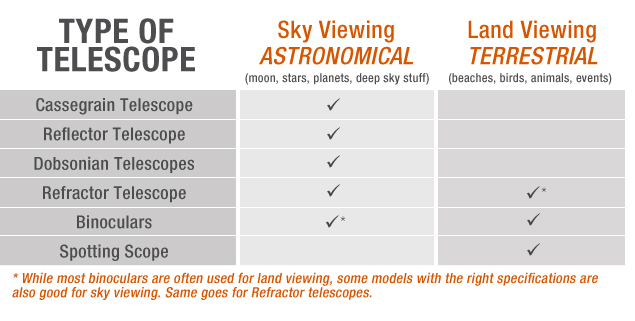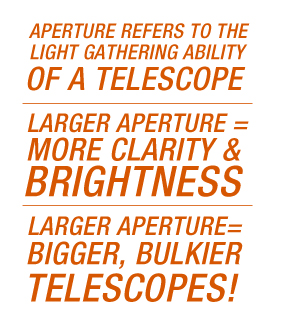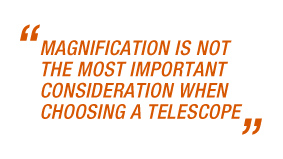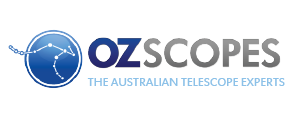|
Intro Looking for a Beginner's Telescope? Let us help You! Chapter 1 Chapter 2 Chapter 3 Now you need to mount your scope! Chapter 4 Accessorise, Accesorise (with eyepieces and filters) Chapter 5 Chapter 6 Caring and Collimating your Telescope Chapter 7 Solar Observations and a How-To guide on making a solar filter |
 INVENTING THE TELESCOPE According to historical records, the first patent application for the telescope was made in 1608 by Hans Lippershey (or Lipperhey), a Dutch eyeglass maker. He claimed that his invention could magnify any object seen through it up to three times. After hearing about Lipperhey’s invention in 1609, Galileo Galilei designed his own version of the instrument. The improvement he made to his invention allowed it to magnify an object up to twenty times which he later presented to the Venetian Senate. He is also the first person to point the telescope skyward. Since then, various researchers have begun improving and refining the telescope into what it is today. TELESCOPE TERMINOLOGYFocal LengthThe distance measured in millimetres, from the objective to the eyepiece, at which the light converges to a point. Focal Ratio The ratio between the aperture and focal length. A larger focal ratio would indicate that a telescope is better for higher magnification compared to a telescope with a smaller focal ratio, which is more suited to seeing fainter objects. For example, a telescope with a 500mm focal length and 100mm aperture will have a focal ratio of f/5. Light will travel much faster through the f/5 telescope, delivering brighter images compared to a telescope with focal ratio of f/15. Optical Tube Assembly Also known as OTA, is the main tube of the telescope which houses the optics and where light is gathered. Magnification The amount that a telescope can enlarge a subject viewed through it. Generally, it is calculated using the following formula: Telescope focal length / Eyepiece focal length = Magnification At a glance, it would seem that having a telescope with higher magnification is always better. However, higher magnification leads to issues such as higher sensitivity towards vibration, darker image, and loss of image quality. In most cases, a telescope with moderate magnification is more than sufficient. Aperture The opening through which light is gathered by the objective lens (primary lens) measured in millimetres. A bigger aperture leads to a brighter image and higher resolution / magnification capability.  Occurs when light passes through a curved glass lens at varying speeds. This leads to a separation of the light spectrum, causing colour fringing along the edges of objects being observed. This is a common issue that occurs with refractor telescopes. It should be noted that some refractors correct this using optical coatings and multiple layers of specially shaped lenses. Spherical Aberration Caused by the spherical curvature of lenses and mirrors. Imperfections on the surface of parabolic lenses or mirrors are also a contributing factor. Spherical lenses & mirrors focus the light at multiple focal points, resulting in a distorted, dim or out of focus image when viewed through the telescope. Next up we will continue with the types of telescope currently available in the market to help you pick your next upgrade or perhaps your first telescope.  |
Intro
Looking for a Beginner's Telescope? Let us help You!
Chapter 1
Chapter 2
Chapter 3
Now you need to mount your scope!
Chapter 4
Accessorise, Accesorise (with eyepieces and filters)
Chapter 5
Chapter 6
Caring and Collimating your Telescope
Chapter 7
Solar Observations and a How-To guide on making a solar filter

The telescope is one of the most profound creations of humankind. With it, we are able to look beyond the night sky and learn more about our universe. With the advancement of technology in recent years, telescopes have become more accessible to the general public which has ignited the flame of curiosity among everyone regardless of their age, to take on astronomy.

INVENTING THE TELESCOPE
According to historical records, the first patent application for the telescope was made in 1608 by Hans Lippershey (or Lipperhey), a Dutch eyeglass maker. He claimed that his invention could magnify any object seen through it up to three times.
After hearing about Lipperhey’s invention in 1609, Galileo Galilei designed his own version of the instrument. The improvement he made to his invention allowed it to magnify an object up to twenty times which he later presented to the Venetian Senate. He is also the first person to point the telescope skyward. Since then, various researchers have begun improving and refining the telescope into what it is today.
TELESCOPE TERMINOLOGY
Focal LengthThe distance measured in millimetres, from the objective to the eyepiece, at which the light converges to a point.
Focal Ratio
The ratio between the aperture and focal length. A larger focal ratio would indicate that a telescope is better for higher magnification compared to a telescope with a smaller focal ratio, which is more suited to seeing fainter objects. For example, a telescope with a 500mm focal length and 100mm aperture will have a focal ratio of f/5. Light will travel much faster through the f/5 telescope, delivering brighter images compared to a telescope with focal ratio of f/15.
Optical Tube Assembly
Also known as OTA, is the main tube of the telescope which houses the optics and where light is gathered.
Magnification
The amount that a telescope can enlarge a subject viewed through it. Generally, it is calculated using the following formula:
Telescope focal length / Eyepiece focal length = Magnification
At a glance, it would seem that having a telescope with higher magnification is always better. However, higher magnification leads to issues such as higher sensitivity towards vibration, darker image, and loss of image quality. In most cases, a telescope with moderate magnification is more than sufficient.
Aperture
The opening through which light is gathered by the objective lens (primary lens) measured in millimetres. A bigger aperture leads to a brighter image and higher resolution / magnification capability.

Occurs when light passes through a curved glass lens at varying speeds. This leads to a separation of the light spectrum, causing colour fringing along the edges of objects being observed. This is a common issue that occurs with refractor telescopes. It should be noted that some refractors correct this using optical coatings and multiple layers of specially shaped lenses.
Spherical Aberration
Caused by the spherical curvature of lenses and mirrors. Imperfections on the surface of parabolic lenses or mirrors are also a contributing factor. Spherical lenses & mirrors focus the light at multiple focal points, resulting in a distorted, dim or out of focus image when viewed through the telescope.
Next up we will continue with the types of telescope currently available in the market to help you pick your next upgrade or perhaps your first telescope.

